FONTAGRO project holds workshop in Colombia
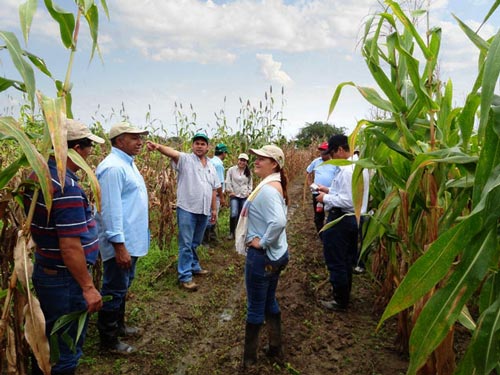 The FONTAGRO project “Development of Maize Lines Combining Drought Tolerance and Ear Rot Resistance as a Way to Mitigate the Effects of Climate Change and Minimize Mycotoxin Contamination” held a workshop during 11-14 September 2012 in Monteria, Colombia. The workshop was jointly organized by CIMMYT and Sergio Mejía of CORPOICA and gathered participants and collaborators from Peru, Panama, Honduras, and Colombia. The participants were trained in concepts of seed production and explored ways to link with seed companies so that quality seed products can reach farmers. They were also trained in harvesting techniques and collecting agronomic data of the validation trials.
The FONTAGRO project “Development of Maize Lines Combining Drought Tolerance and Ear Rot Resistance as a Way to Mitigate the Effects of Climate Change and Minimize Mycotoxin Contamination” held a workshop during 11-14 September 2012 in Monteria, Colombia. The workshop was jointly organized by CIMMYT and Sergio Mejía of CORPOICA and gathered participants and collaborators from Peru, Panama, Honduras, and Colombia. The participants were trained in concepts of seed production and explored ways to link with seed companies so that quality seed products can reach farmers. They were also trained in harvesting techniques and collecting agronomic data of the validation trials.
The FONTAGRO project has led to the release of two varieties combining drought tolerance and resistance to ear rots and mycotoxins which have already been registered and released in Honduras. Two additional varieties are currently in the process of being validated for release in Colombia and Nicaragua. Mycotoxins result from fungal infection of maize kernels and have detrimental health effects when contaminated grain is consumed by humans and livestock. They have the potential to cause acute and chronic health problems through direct consumption, consumption through animal products, skin contact, and inhalation. Pre- and post-harvest technologies have been an effective method of reducing mycotoxins in maize.
“Through the generous support of the Director of Corpoica Turipana, the course went on very well,” stated George Mahuku, FONTAGRO project leader. During his opening remarks, Mahuku highlighted the successes of the project in validation and distribution of maize varieties and hybrids. “The project has also made progress in creating awareness of the health hazards from mycotoxin contamination,” stated Mahuku.
Luis Narro from CIMMYT-Colombia discussed current developments in maize breeding and the genesis of hybrid maize production. Félix San Vicente, leader of International Maize Yield Consortium (IMIC)-Latin America, discussed the IMIC concept and CRPs MAIZE and WHEAT, as well as ways to channel products from this project into the CRP/IMIC concept to increase diffusion and distribution. Cesar Ruiz from Semivalle, a private seed company based in Colombia, provided insights into the seed industry and the interactions between public institutions and private seed companies, a crucial component of the project enabling improved varieties to reach farmers. Alba Arcos, a CIMMYT-Colombia PhD student, presented on doubled haploid technology and how this can be harnessed to accelerate inbred line development combining different favorable traits.
“The meeting was a success and the project has generated many products in three years, including information on the incidence and prevalence of aflatoxin and fumonisin contamination of maize. We hope that we can leverage more funding to ensure that these products are widely tested throughout Latin America,” stated Mahuku. Overall, the FONTAGRO project and its network of collaborators have generated more than 6,000 doubled haploid lines combining drought tolerance and ear rot resistance.
During the workshop, collaborators discussed next steps for the project. A possible link to leverage funding from IMIC and CRP MAIZE to continue the network of breeders, researchers, and seed companies were discussed as follow-up items. A Spanish language course on doubled haploid technology will take place at the end of November at CIMMYT headquarters in El Batán, Mexico. The workshop will draw upon the results of the Monteria workshop and promote linkages throughout the region of Latin America.
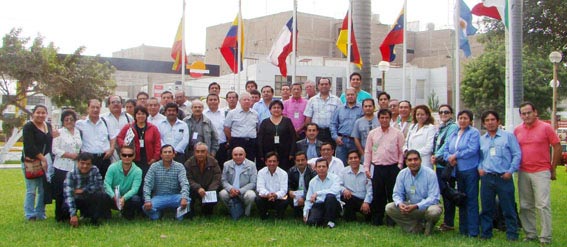
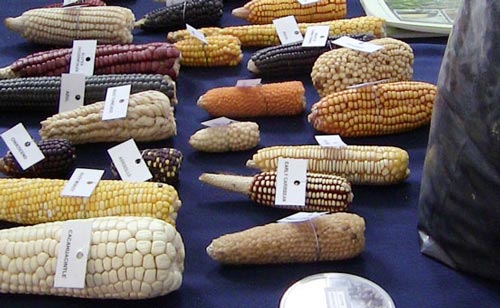 National Service Seed Inspection and Certification (
National Service Seed Inspection and Certification (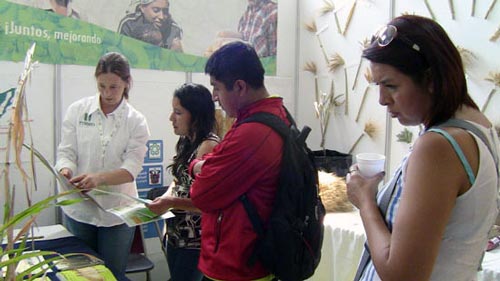 CIMMYT participated in the fair through its Seeds of Discovery (SeeD) initiative under the Genetic Resources Program. Martha Willcox (SeeD maize phenotyping coordinator) and Carolina Saint Pierre (SeeD wheat phenotyping coordinator) presented maize and wheat collections from the CIMMYT genebank and a poster prepared by Paulina González and Bibiana Espinosa from the germplasm bank emphasizing the importance of seed conservation and its long-term benefits for humanity. CIMMYT team was also represented by Isabel Peña, Institutional Relations Head, who provided visitors with information on CIMMYT. The CIMMYT booth was visited by many students, professors, and farmers. The students and professors expressed a particular interest in CIMMYT’s publications on maize and wheat diseases, conservation agriculture, the SeeD initiative, breeding for drought and low nitrogen tolerance, breeding of native maize (criollos), and grain storage techniques. Farmers were mostly interested in CIMMYT maize collections samples. They also shared their experience working with different types of maize.
CIMMYT participated in the fair through its Seeds of Discovery (SeeD) initiative under the Genetic Resources Program. Martha Willcox (SeeD maize phenotyping coordinator) and Carolina Saint Pierre (SeeD wheat phenotyping coordinator) presented maize and wheat collections from the CIMMYT genebank and a poster prepared by Paulina González and Bibiana Espinosa from the germplasm bank emphasizing the importance of seed conservation and its long-term benefits for humanity. CIMMYT team was also represented by Isabel Peña, Institutional Relations Head, who provided visitors with information on CIMMYT. The CIMMYT booth was visited by many students, professors, and farmers. The students and professors expressed a particular interest in CIMMYT’s publications on maize and wheat diseases, conservation agriculture, the SeeD initiative, breeding for drought and low nitrogen tolerance, breeding of native maize (criollos), and grain storage techniques. Farmers were mostly interested in CIMMYT maize collections samples. They also shared their experience working with different types of maize.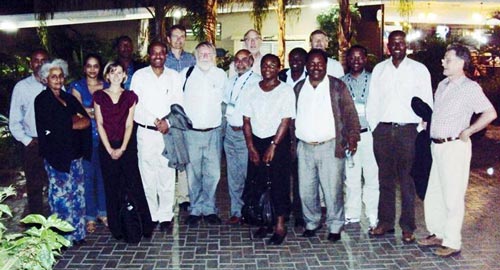 A team of scientists from CIMMYT’s socioeconomics program participated in the 28th triennial International Conference of Agricultural Economists (ICAE) in Foz do Iguaçu, Brazil, during 18-24 August 2012. ICAE, which is considered the key platform for the preservation of international agricultural and development economics research, brought together over 700 researchers and provided an opportunity to share new research ideas, methods, and tools.
A team of scientists from CIMMYT’s socioeconomics program participated in the 28th triennial International Conference of Agricultural Economists (ICAE) in Foz do Iguaçu, Brazil, during 18-24 August 2012. ICAE, which is considered the key platform for the preservation of international agricultural and development economics research, brought together over 700 researchers and provided an opportunity to share new research ideas, methods, and tools.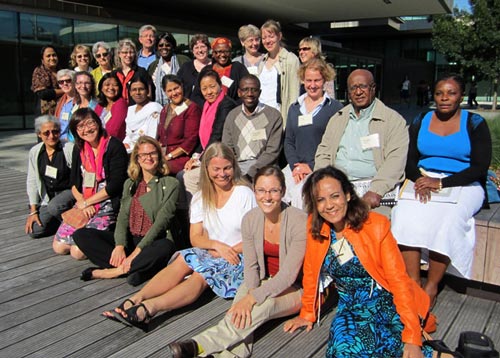 “The workshop was a great opportunity to share ideas and lessons learned, to exchange concepts of different gender strategies, as well as to discuss the latest gender-related research methods,” said Beuchelt. The workshop identified four themes for cross-program research on gender and agriculture: (1) engendering agricultural value chains; (2) gender-transformative approaches; (3) gender and technology adoption and diffusion; and (4) gender and nutrition. The participants also agreed upon a shared set of gender-responsive research outcomes that can be jointly monitored to assess progress towards CGIAR System Level Outcomes. Furthermore, they discussed how to measure these outcomes and agreed to continue collaboration on the development and measurement of a shared set of genderresponsive indicators.
“The workshop was a great opportunity to share ideas and lessons learned, to exchange concepts of different gender strategies, as well as to discuss the latest gender-related research methods,” said Beuchelt. The workshop identified four themes for cross-program research on gender and agriculture: (1) engendering agricultural value chains; (2) gender-transformative approaches; (3) gender and technology adoption and diffusion; and (4) gender and nutrition. The participants also agreed upon a shared set of gender-responsive research outcomes that can be jointly monitored to assess progress towards CGIAR System Level Outcomes. Furthermore, they discussed how to measure these outcomes and agreed to continue collaboration on the development and measurement of a shared set of genderresponsive indicators.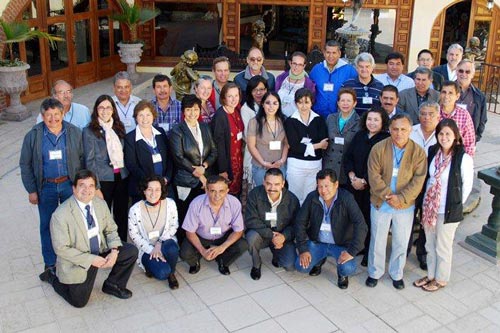 In order to define the research priorities for the Seeds of Discovery initiative in maize quality of landraces (a Strategic Initiative of both CRPs MAIZE and WHEAT funded by Mexico), a diverse group of food scientists, chemists, maize breeders, genebank curators, social scientists, and representatives of research institutions such as UNAM and Chapingo, met for a workshop to discuss future research on quality characteristics within native Mexican maize.
In order to define the research priorities for the Seeds of Discovery initiative in maize quality of landraces (a Strategic Initiative of both CRPs MAIZE and WHEAT funded by Mexico), a diverse group of food scientists, chemists, maize breeders, genebank curators, social scientists, and representatives of research institutions such as UNAM and Chapingo, met for a workshop to discuss future research on quality characteristics within native Mexican maize.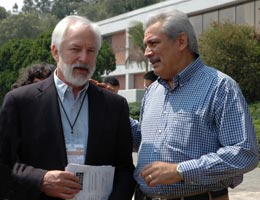 Skyrocketing food prices recently brought Latin American agriculture ministers from 14 countries and development experts to CIMMYT to seek a way forward for a region characterized by serious rural poverty.
Skyrocketing food prices recently brought Latin American agriculture ministers from 14 countries and development experts to CIMMYT to seek a way forward for a region characterized by serious rural poverty.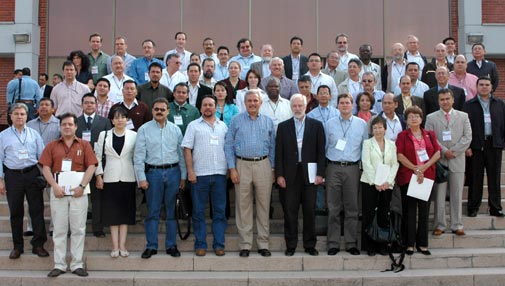
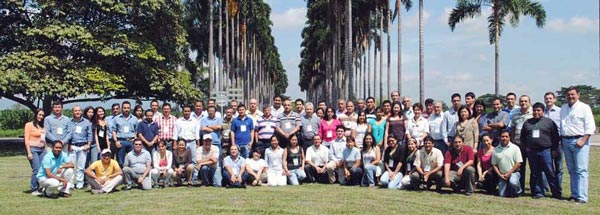
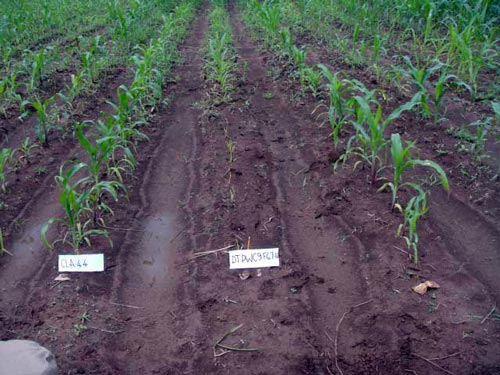 On 19 August 2011, a workshop was hosted by CIMMYT-Colombia for maize producers, association representatives, and educators and students from various local universities, among others, on the advances of a project to increase maize production in Colombia through the development of improved germplasm adapted to the production systems in the Orinoquía region (East Plains). The Orinoquía is an area of plains, covered by pasture and interspersed with rivers and forests; all the rivers terminate in the Orinoco river. The project is coordinated by CIMMYT-Colombia, with support from the Colombian Agricultural Research Cooperation (CORPOICA), Colombian Growers Federation of Cereals and Legumes (FENALCE), International Center of Tropical Agriculture (CIAT), and the Ministry of Agriculture and Rural Development of Colombia. The workshop took place at the CORPOICA Research Center in Villavicencio, Del Meta District.
On 19 August 2011, a workshop was hosted by CIMMYT-Colombia for maize producers, association representatives, and educators and students from various local universities, among others, on the advances of a project to increase maize production in Colombia through the development of improved germplasm adapted to the production systems in the Orinoquía region (East Plains). The Orinoquía is an area of plains, covered by pasture and interspersed with rivers and forests; all the rivers terminate in the Orinoco river. The project is coordinated by CIMMYT-Colombia, with support from the Colombian Agricultural Research Cooperation (CORPOICA), Colombian Growers Federation of Cereals and Legumes (FENALCE), International Center of Tropical Agriculture (CIAT), and the Ministry of Agriculture and Rural Development of Colombia. The workshop took place at the CORPOICA Research Center in Villavicencio, Del Meta District.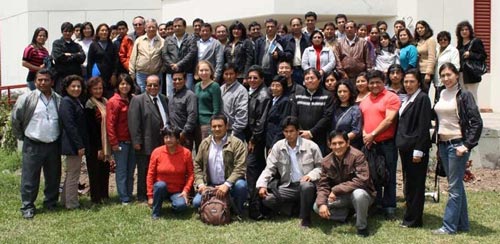
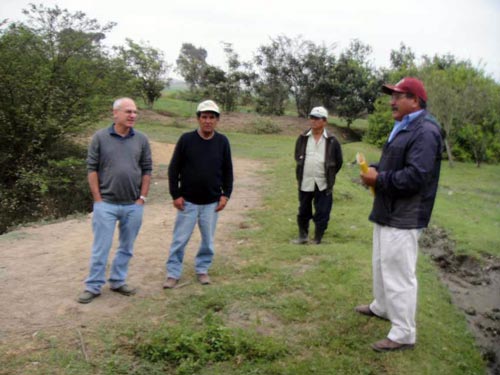
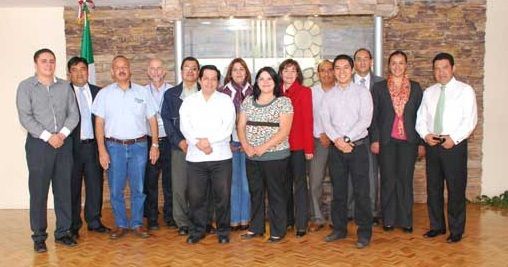
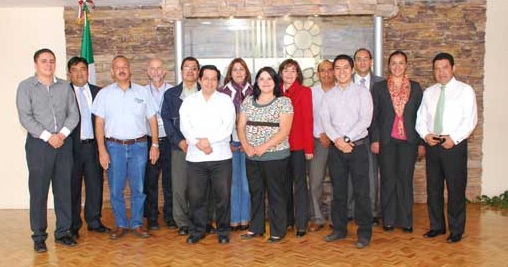
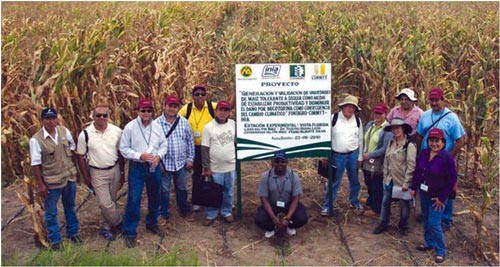 A meeting was held during 17-21 January 2011 in Chiclayo, Peru to review progress on developing maize germplasm designed to mitigate the effects of climate change and reduce contamination with mycotoxins. This work is being conducted under the FONTAGRO funded project, “Developing and validating drought tolerant maize to stabilize productivity and reduce mycotoxin contamination resulting from climate change.” The project, which began in 2009 and will run until 2013, seeks to develop and distribute drought tolerant maize varieties that are resistant to ear rots and less prone to mycotoxin accumulation. The improved maize germplasm will be made available to Latin American scientists along with tools and methodologies for developing drought tolerant maize, and detecting mycotoxins in maize grains and products.
A meeting was held during 17-21 January 2011 in Chiclayo, Peru to review progress on developing maize germplasm designed to mitigate the effects of climate change and reduce contamination with mycotoxins. This work is being conducted under the FONTAGRO funded project, “Developing and validating drought tolerant maize to stabilize productivity and reduce mycotoxin contamination resulting from climate change.” The project, which began in 2009 and will run until 2013, seeks to develop and distribute drought tolerant maize varieties that are resistant to ear rots and less prone to mycotoxin accumulation. The improved maize germplasm will be made available to Latin American scientists along with tools and methodologies for developing drought tolerant maize, and detecting mycotoxins in maize grains and products.